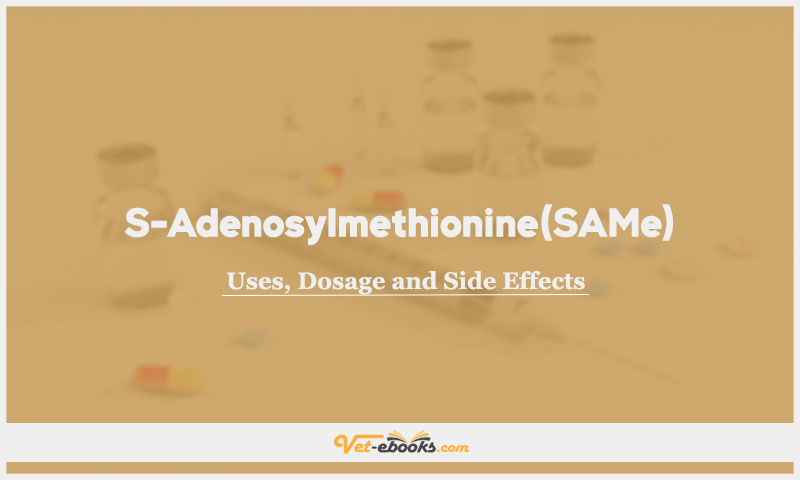S-Adenosylmethionine (SAMe) In Dogs & Cats: Uses, Dosage and Side Effects

Overview
- S-adenosylmethionine (SAMe) is a naturally occurring molecule in cells throughout the body.
- It is crucial for various biochemical pathways and has a central role in liver cells (hepatocytes).
- SAMe is necessary for glutathione (GSH) production, an antioxidant that detoxifies cells and protects liver cells from toxins.
- In liver disease, GSH levels can decrease, but SAMe can raise hepatic GSH levels.
- SAMe may have mood-elevating effects, especially in older animals, potentially impacting monoamine metabolism and cell membrane fluidity.
- Supplementation with SAMe may improve age-related mental decline in dogs.
- SAMe is known to have antidepressant effects in humans.
Uses of S-Adenosylmethionine (SAMe)
- Adjunctive treatment for liver disease, especially for acute hepatotoxin-induced liver disease.
- Can also be used in patients on long-term therapy with potentially hepatotoxic drugs including lomustine (CCNU).
- SAMe may improve bile flow in cats.
- Used as an aid in the management of age-related behaviour problems and cognitive dysfunction in dogs and cats.
Dose of S-Adenosylmethionine (SAMe) in Dogs and Cats
Dogs:
- All uses: At least 100 mg for every 10 kg p.o. q24h.
Cats:
- All uses: 100 mg/cat p.o. q24h.
- The suggested starting dose in the absence of other information is 20 mg/ kg p.o. q24h.
- Administer on an empty stomach at least 1 hour before food.
Drug Dosage Calculator
You Should Give:
Side Effects of S-Adenosylmethionine (SAMe) in Dogs and Cats
- GI signs (nausea, vomiting, diarrhoea), dry mouth, headache, sweating and dizziness are occasionally reported in humans.
- A paradoxical increase in anxiety may occur.
Contraindications of S-Adenosylmethionine (SAMe) in Dogs and Cats
- No information available.
Some Notes:
- Serotonergic Effects: Using SAMe together with tramadol, meperidine, pentazocine, MAOIs (e.g., selegiline), SSRIs (e.g., fluoxetine), or other antidepressants (e.g., clomipramine, amitriptyline) may lead to additive serotonergic effects. This means there is a risk of excessive serotonin activity in the body, which can have serious consequences.
- Hepatic Glucuronidation: SAMe may increase the clearance (metabolism) of drugs that undergo hepatic glucuronidation. These drugs include paracetamol (acetaminophen), diazepam, and morphine. This interaction could potentially affect the efficacy or duration of action of these medications.
Tip
Do You Want To Increase Your Veterinary Knowledge and Practical Skills?
You Can Now Browse and Download +3000 Books For Veterinary Professionals & Students Online.
Download Veterinary Books












